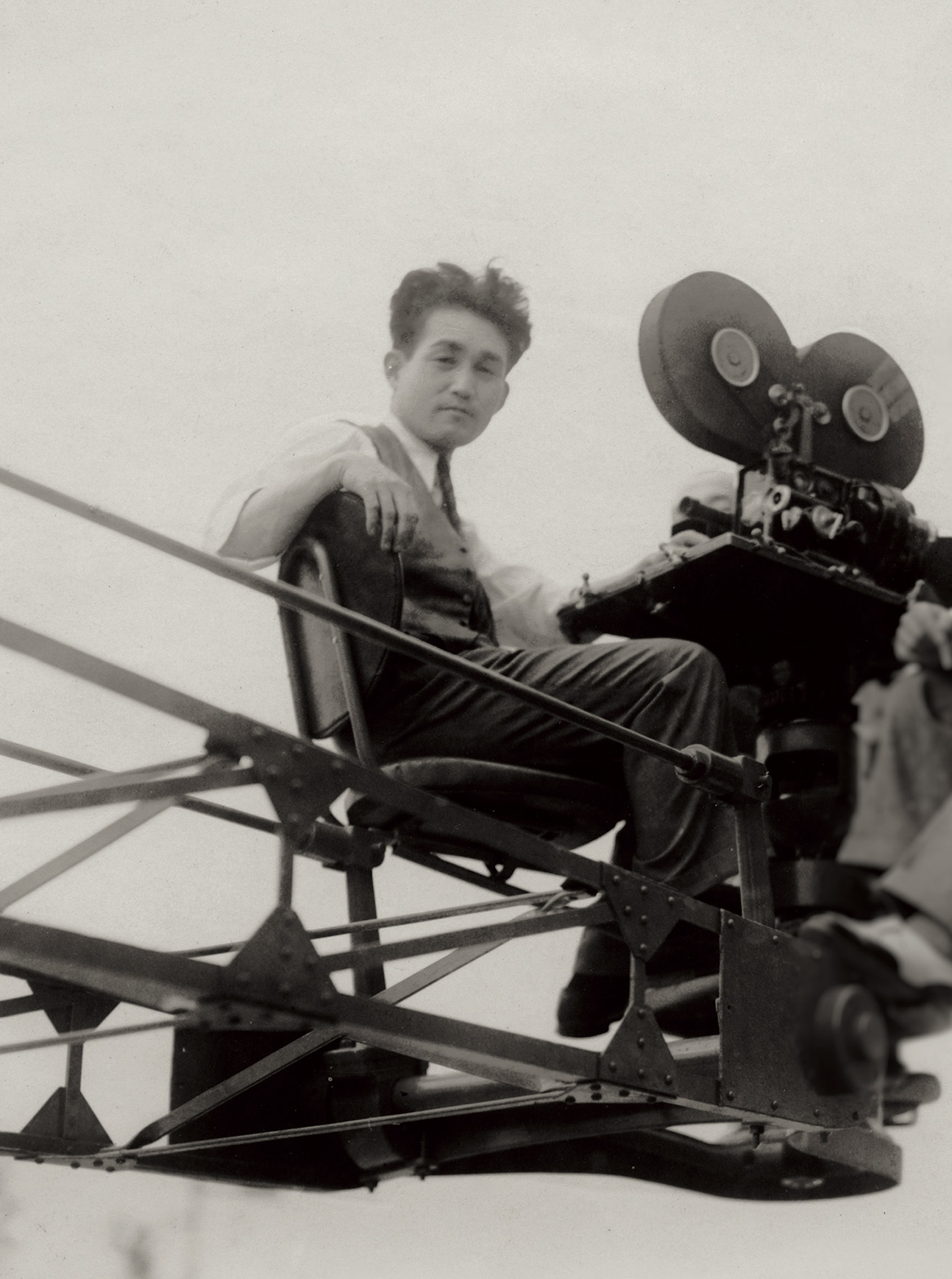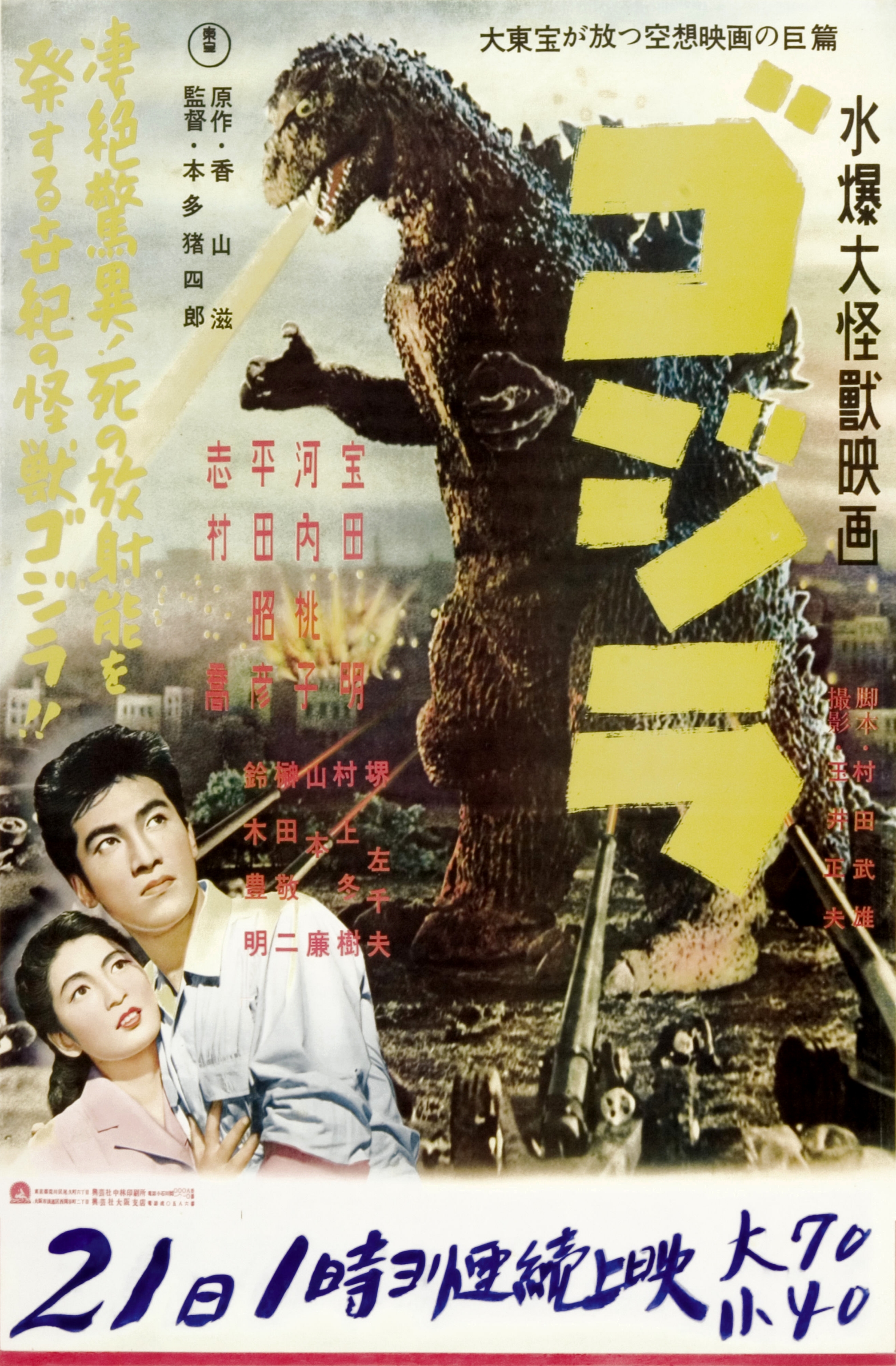|
Monster Seafood Wars
is a 2020 Japanese ''kaiju'' film directed by Minoru Kawasaki. The film is loosely based on an unmade film featuring a giant octopus proposed by Eiji Tsuburaya prior to production of the original 1954 ''Godzilla'' film. Plot Yuta Tanuma, a former member of the Institute for Super Physics and Chemistry, was dismissed during the development of a powerful drug that enlarges living things, and is currently helping his parents' sushi restaurant. Meanwhile, a giant squid and a giant octopus suddenly appear in Tokyo. Hibiki, a government-organized seafood monster attack unit (SMAT) commander, invited Yuta to SMAT. SMAT introduces a new weapon "vinegar cannon" to challenge the three major monsters. However, because the monster meat that was cut off by the attack was delicious, a "monster meat boom" occurred in the world. Cast * Eiichi Kikuchi (born August 21, 1942, in Tokyo Metropolis) is a Japanese actor. He has appeared in several episodes of the Ultra Series. TV *''Amb ... [...More Info...] [...Related Items...] OR: [Wikipedia] [Google] [Baidu] |
Minoru Kawasaki (film Director)
, born 15 August 1958, is a Japanese people, Japanese filmmaking, filmmaker, best known for Low-budget film, low-budget parody films featuring surreal humour and tokusatsu, traditional practical effects. Kawasaki began his career with mostly self-financed work, including the ''Den-Ace'' short films, featuring a parody of Kyodai Hero, kyodai-style Japanese superheroes, before working on Tsuburaya Production's ''Ultraman Tiga'' (1996-1997). He had his first hit with ''The Calamari Wrestler'' (2004), about a wrestler who inexplicably becomes a giant squid. He followed this up with ''Executive Koala'' (2005), about an anthropomorphic koala salaryman who may or may not have murdered his wife, and ''Kabuto-O Beetle'' (also 2005), another wrestling-themed movie, this time with a giant stag beetle. In 2006, he released ''The World Sinks Except Japan'', a spoof of Shinji Higuchi's Sinking of Japan (2006 film), remake of ''Tidal Wave (1973 film), Japan Sinks'', and ''Crab Goalkeeper'' (als ... [...More Info...] [...Related Items...] OR: [Wikipedia] [Google] [Baidu] |
Eiji Tsuburaya
was a Japanese special effects director and cinematographer. Known as the he worked on 250 feature films in a career spanning 50 years. He is regarded as one of the co-creators of the ''Godzilla'' series, as well as the main creator of the ''Ultra'' series. During his rise to post-war fame in the wake of ''Godzilla'' (1954), it was widely reported that Tsuburaya was born on July 7, which is the high day of Tanabata (star festival), a sign of good fortune. Biography 1901–1919: Early life Tsuburaya was born on July 7, 1901, in Sukagawa, Iwase, Fukushima Prefecture (present-day Sukagawa, Fukushima), to a merchant family that manufactured malted rice. He was the first son of Isamu and Sei Tsumuraya, with a large extended family. He described his childhood as filled with "mixed emotions." When he was three, his mother died, at the age of 19, after giving birth to her second son. His father, who had been adopted into the family through marriage, subsequently left the family, ... [...More Info...] [...Related Items...] OR: [Wikipedia] [Google] [Baidu] |
Eiichi Kikuchi
(born August 21, 1942, in Tokyo Metropolis) is a Japanese actor. He has appeared in several episodes of the Ultra Series. TV *''Ambassador Magma'' (1966-1967) *''Ultra Seven'' (1967-1968) - Ultra Seven *'' Fight! Mighty Jack'' *''Return of Ultraman'' (1971) - Ultraman Jack / Zazahn / MAT Communication Worker *'' Kaiketsu Lion-Maru'' *''Ultraman Ace'' *''Ultraman Taro'' *''Denjin Zaborger'' *'' J.A.K.Q. Dengekitai'' *'' Spider-Man (tokusatsu)'' *''Battle Fever J'' *''Ultraman 80'' *'' Dai Sentai Goggle V'' (1982-1983, 15 episodes) - Dr. Iguana *''Kyojuu Tokusou Juspion'' (1985, Episodes 25 & 26) - Gazami brother #1 *''Gridman the Hyper Agent'' *'' Ultraman Dyna'' *''Ultraman Nexus'' *''Ultraman Mebius'' (2006) - President of the Kikuchi Electric Appliances Company Films *'' You Only Live Twice'' (1967) - Hitman (uncredited) *''Number Ten Blues'' (1975) *''The Monster X Strikes Back/Attack the G8 Summit'' (2008) *''Executive Koala , born 15 August 1958, is a Japanese fi ... [...More Info...] [...Related Items...] OR: [Wikipedia] [Google] [Baidu] |
Kaiju
is a Japanese media genre that focuses on stories involving giant monsters. The word ''kaiju'' can also refer to the giant monsters themselves, which are usually depicted attacking major cities and battling either the military or other monsters. The ''kaiju'' genre is a subgenre of ''tokusatsu'' entertainment. The 1954 film '' Godzilla'' is commonly regarded as the first ''kaiju'' film. ''Kaiju'' characters are often somewhat metaphorical in nature; Godzilla, for example, serves as a metaphor for nuclear weapons, reflecting the fears of post-war Japan following the atomic bombings of Hiroshima and Nagasaki and the '' Lucky Dragon 5'' incident. Other notable examples of ''kaiju'' characters include Rodan, Mothra, King Ghidorah and Gamera. Etymology The Japanese word ''kaijū'' originally referred to monsters and creatures from ancient Japanese legends; it earlier appeared in the Chinese ''Classic of Mountains and Seas''. After ''sakoku'' had ended and Japan was opened ... [...More Info...] [...Related Items...] OR: [Wikipedia] [Google] [Baidu] |
Godzilla (1954 Film)
is a 1954 Japanese ''kaiju'' film directed by Ishirō Honda, with special effects by Eiji Tsuburaya. Produced and distributed by Toho Co., Ltd., it is the first film in the ''Godzilla'' franchise. The film stars Akira Takarada, Momoko Kōchi, Akihiko Hirata, and Takashi Shimura, with Haruo Nakajima and Katsumi Tezuka as Godzilla. In the film, Japan's authorities deal with the sudden appearance of a giant monster, whose attacks trigger fears of nuclear holocaust during post-war Japan. ''Godzilla'' entered production after a Japanese-Indonesian co-production collapsed. Tsuburaya originally proposed for a giant octopus before the filmmakers decided on a dinosaur-inspired creature. ''Godzilla'' pioneered a form of special effects called suitmation, in which a stunt performer wearing a suit interacts with miniature sets. Principal photography ran 51 days, and special effects photography ran 71 days. ''Godzilla'' was theatrically released in Japan on November 3, 1954, ... [...More Info...] [...Related Items...] OR: [Wikipedia] [Google] [Baidu] |
Tokusatsu Films
is a Japanese term for live action film or television drama that makes heavy use of practical special effects. ''Tokusatsu'' entertainment mainly refers to science fiction, War film, war, fantasy, or Horror film, horror media featuring such technology but is sometimes dubbed a genre itself. The most popular subgenres of include ''kaiju'' such as the ''Godzilla (film series), Godzilla'' and ''Gamera'' series; superhero such as the ''Kamen Rider Series, Kamen Rider'' and ''Metal Hero Series, Metal Hero'' series; and mecha like ''Giant Robo (tokusatsu), Giant Robo'' and ''Super Robot Red Baron''. Some television programs combine several of these subgenres, for example the ''Ultra Series, Ultraman'' and ''Super Sentai'' series. is one of the most popular forms of Japanese entertainment, but only a small proportion of films and television programs are widely known outside of Japan. Nevertheless, certain properties have attained popularity outside of Japan; ''Godzilla'' is featu ... [...More Info...] [...Related Items...] OR: [Wikipedia] [Google] [Baidu] |
2020s Japanese Films
S, or s, is the nineteenth letter in the Latin alphabet, used in the modern English alphabet, the alphabets of other western European languages and others worldwide. Its name in English is ''ess'' (pronounced ), plural ''esses''. History Origin Northwest Semitic šîn represented a voiceless postalveolar fricative (as in 'ip'). It originated most likely as a pictogram of a tooth () and represented the phoneme via the acrophonic principle. Ancient Greek did not have a phoneme, so the derived Greek letter sigma () came to represent the voiceless alveolar sibilant . While the letter shape Σ continues Phoenician ''šîn'', its name ''sigma'' is taken from the letter ''samekh'', while the shape and position of ''samekh'' but name of ''šîn'' is continued in the '' xi''. Within Greek, the name of ''sigma'' was influenced by its association with the Greek word (earlier ) "to hiss". The original name of the letter "sigma" may have been ''san'', but due to the complica ... [...More Info...] [...Related Items...] OR: [Wikipedia] [Google] [Baidu] |
Kaiju Films
is a Japanese media genre that focuses on stories involving giant monsters. The word ''kaiju'' can also refer to the giant monsters themselves, which are usually depicted attacking major cities and battling either the military or other monsters. The ''kaiju'' genre is a subgenre of ''tokusatsu'' entertainment. The 1954 film ''Godzilla'' is commonly regarded as the first ''kaiju'' film. ''Kaiju'' characters are often somewhat metaphorical in nature; Godzilla, for example, serves as a metaphor for nuclear weapons, reflecting the fears of post-war Japan following the atomic bombings of Hiroshima and Nagasaki and the '' Lucky Dragon 5'' incident. Other notable examples of ''kaiju'' characters include Rodan, Mothra, King Ghidorah and Gamera. Etymology The Japanese word ''kaijū'' originally referred to monsters and creatures from ancient Japanese legends; it earlier appeared in the Chinese ''Classic of Mountains and Seas''. After ''sakoku'' had ended and Japan was opened to f ... [...More Info...] [...Related Items...] OR: [Wikipedia] [Google] [Baidu] |
Giant Monster Films
In folklore, giants (from Ancient Greek: ''gigas'', cognate giga-) are beings of human-like appearance, but are at times prodigious in size and strength or bear an otherwise notable appearance. The word ''giant'' is first attested in 1297 from Robert of Gloucester's chronicle. It is derived from the '' Gigantes'' ( grc-gre, Γίγαντες) of Greek mythology. Fairy tales such as ''Jack the Giant Killer'' have formed the modern perception of giants as dimwitted ogres, sometimes said to eat humans, while other giants tend to eat the livestock. The antagonist in '' Jack and the Beanstalk'' is often described as a giant. In some more recent portrayals, like those of Jonathan Swift and Roald Dahl, some giants are both intelligent and friendly. Literary and cultural analysis Giants appear in the folklore of cultures worldwide as they represent a relatively simple concept. Representing the human body enlarged to the point of being monstrous, giants evoke terror and remind hum ... [...More Info...] [...Related Items...] OR: [Wikipedia] [Google] [Baidu] |




